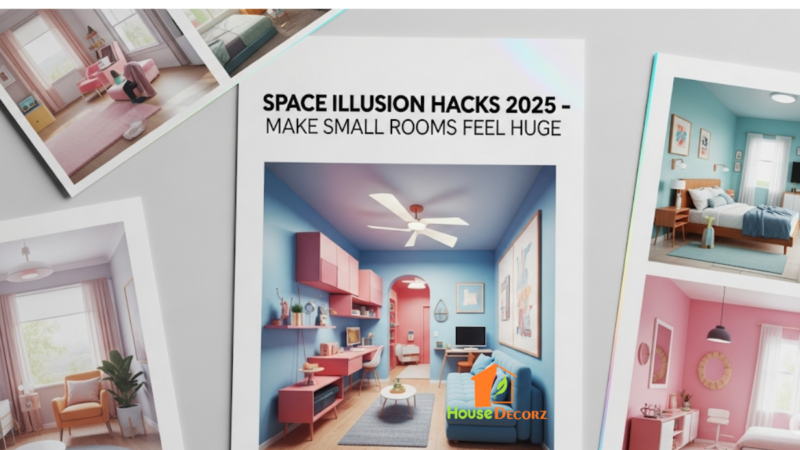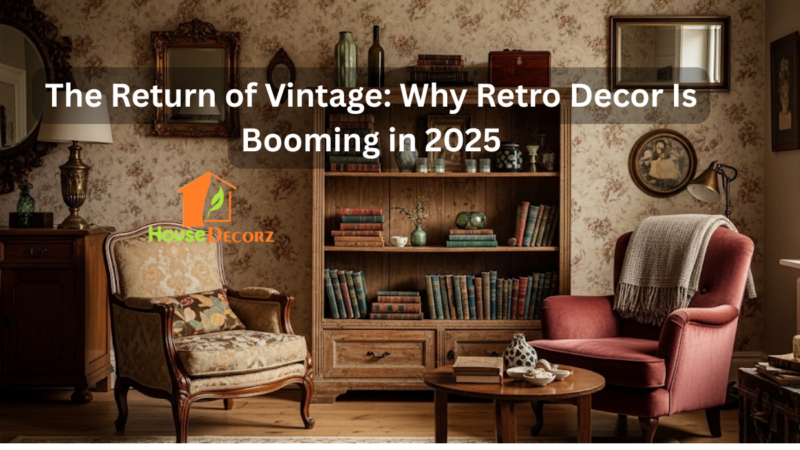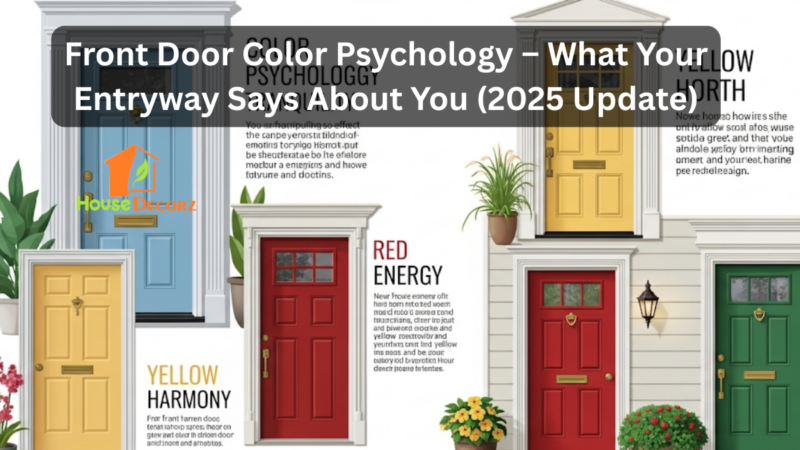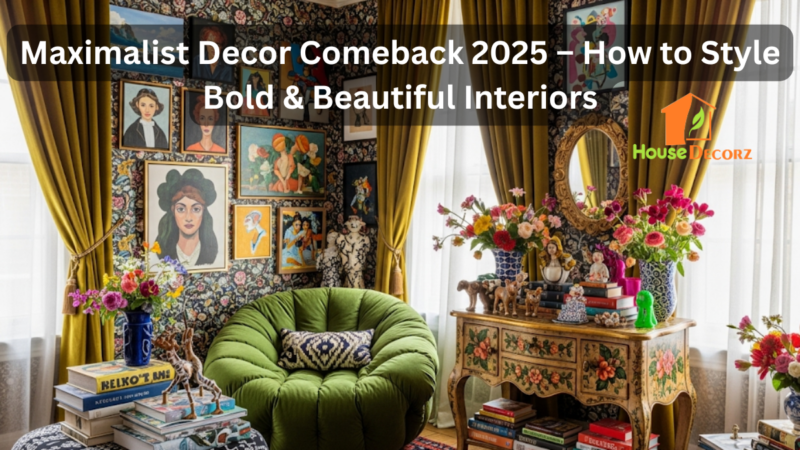Mood-Boosting Decor Ideas 2025 – Designs That Reduce Anxiety
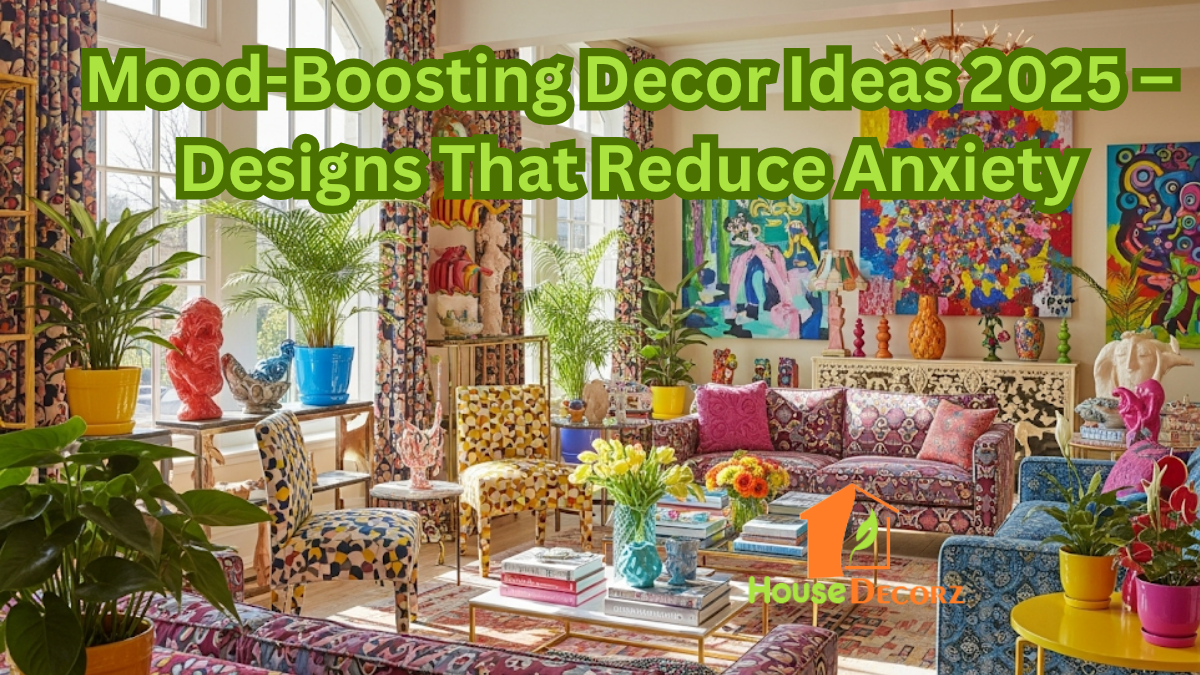
In an increasingly fast-paced world, our homes have evolved beyond mere shelters; they are becoming essential sanctuaries for our mental and emotional well-being.
The design choices we make, from the colors on our walls to the textures we incorporate, possess a profound ability to influence our moods, alleviate stress, and even reduce anxiety.
As we step into 2025, the focus on creating environments that actively support our inner calm is more prominent than ever.
This guide explores innovative and timeless Mood-Boosting Decor Ideas 2025 that prioritize tranquility, foster mindfulness, and cultivate genuinely calming spaces.
Harnessing the Psychology of Color
Colors are not just visual stimuli; they are powerful emotional triggers. Understanding color psychology is fundamental to designing spaces that promote serenity and reduce anxious feelings.
Serene Blues and Greens
It’s no coincidence that blues and greens are consistently associated with peace and nature. Blue tones, particularly softer shades like sky blue, dusty blue, or periwinkle, evoke feelings of calm, stability, and contemplation.
They can help lower heart rate and blood pressure, creating an immediate sense of relaxation. Imagine a bedroom bathed in a gentle blue, reminiscent of a clear sky, promoting restful sleep.
Green, on the other hand, symbolizes growth, harmony, and renewal. Sage green, olive green, or muted forest greens connect us to the natural world, bringing a sense of balance and freshness indoors.
Incorporating these hues through paint, textiles, or even large art pieces can create a perpetually tranquil atmosphere.
Warm Neutrals for Grounding
While bright colors can stimulate, an excess can be overwhelming. Warm neutrals provide a grounding and comforting base for any room designed for calm. Think of soft beiges, creamy off-whites, and gentle grays with warm undertones.
These colors create a harmonious backdrop that allows other elements to shine without competing for attention.
They offer a sense of stability and simplicity, reducing visual clutter and promoting a feeling of spaciousness.
Consider layering different neutral tones through varied textures, such as a plush cream rug against a light taupe wall, to add depth without introducing visual noise.
Strategic Pops of Joyful Hues
While the overall palette should be calming, small, intentional pops of joyful colors can elevate mood without overstimulating.
A splash of soft yellow can bring optimism and warmth, reminiscent of sunshine. A touch of pale pink can evoke feelings of compassion and comfort.
These can be introduced through accent pillows, a single piece of artwork, or a small decorative object.
The key is moderation; they act as cheerful accents rather than dominant features, providing subtle boosts to your emotional state.
Embracing Nature with Biophilic Design
The innate human connection to nature, known as biophilia, is a potent antidote to modern-day stressors. Incorporating elements of the natural world into your home is a cornerstone of mental health decor.
Integrating Living Greenery
Plants are more than just decorative elements; they are living components that actively purify the air, reduce stress, and improve focus.
Fill your spaces with various houseplants, from large, leafy specimens like a fiddle-leaf fig or monstera to smaller, easy-care options like snake plants or peace lilies. Grouping plants together can create mini indoor oases.
Consider a vertical garden or hanging planters to bring greenery to eye level. The act of caring for plants itself can be a meditative and grounding activity.
Natural Materials and Textures
Beyond living plants, incorporate natural materials that bring the outdoors in. Think of furniture made from sustainable wood, woven rattan accents, stone elements, or linen textiles. These materials not only add organic beauty but also tactile comfort.
The subtle imperfections and variations in natural materials offer a soothing visual appeal that artificial, uniform surfaces often lack.
A rough-hewn wooden coffee table, a soft wool throw, or ceramic pottery can add layers of natural texture that engage the senses in a comforting way.
Maximizing Natural Light
Natural light is a powerful mood enhancer. Design your spaces to maximize the influx of daylight. Keep windows unobstructed with sheer curtains or blinds that can be easily pulled back.
Strategically place mirrors opposite windows to bounce light deeper into the room. During the evening, opt for warm, dimmable artificial lighting that mimics the natural sunset, promoting relaxation and preparing your body for rest.
Avoid harsh, overhead fluorescent lights, which can contribute to eye strain and feelings of agitation.
Crafting a Sensory Sanctuary
Calming spaces engage all the senses, not just sight. Thoughtful consideration of sound, scent, and touch can profoundly impact your emotional state.
Soothing Sounds
Minimize jarring noises by incorporating elements that promote a peaceful auditory environment. Soft furnishings like rugs, heavy curtains, and upholstered furniture can absorb sound.
Consider adding a small indoor water feature for the gentle, rhythmic sound of trickling water, or use a sound machine with nature sounds or calming white noise.
For moments of focused relaxation, invest in quality headphones to enjoy calming music or guided meditations.
Aromatic Ambiance
Our sense of smell is directly linked to memory and emotion. Introduce calming scents into your home using essential oil diffusers, natural candles, or dried botanicals.
Lavender, chamomile, bergamot, and frankincense are known for their anxiety-reducing properties.
Avoid strong, artificial fragrances that can be overwhelming or trigger headaches. A subtle, natural aroma can create an inviting and tranquil atmosphere.
Inviting Textures
The tactile experience of a room contributes significantly to its comfort level. Layer soft, inviting textures through throws, pillows, rugs, and upholstery.
Think about plush velvet, soft linen, chunky knits, or faux fur. These textures invite touch and create a sense of coziness and security, making you want to sink in and relax.
The Power of Organization and Intentionality
A cluttered environment often reflects and contributes to a cluttered mind. Creating organized and intentional spaces is a key aspect of mental health decor.
Declutter for Clarity
The simplest yet most impactful decor hack for anxiety reduction is decluttering. Visual clutter creates mental noise.
Regularly purge items you no longer need or love. Invest in smart storage solutions – baskets, built-in shelves, or furniture with hidden compartments – to keep surfaces clear and organized.
A streamlined environment fosters a sense of order and calm, allowing your mind to relax.
Curated Personal Touches
While decluttering is crucial, your space should still feel personal and reflect who you are. Display meaningful objects, photographs, or artwork that evoke positive memories and emotions.
These curated personal touches can serve as visual affirmations, reminding you of joy and connection. The key is intentionality: each item should have a purpose or bring you genuine happiness.
Dedicated Relaxation Zones
If space allows, designate a specific area in your home purely for relaxation and mindfulness. This could be a cozy reading nook with a comfortable armchair, a meditation corner with a soft cushion and calming artwork, or a quiet spot by a window with a plant.
Having a dedicated calming space signals to your brain that this is a place for unwinding and self-care.
Recommendation
The Return of Vintage: Why Retro Decor Is Booming in 2025
Front Door Color Psychology – What Your Entryway Says About You (2025 Update)
Maximalist Decor Comeback 2025 – How to Style Bold & Beautiful Interiors
False Ceiling Designs for Modern Indian Homes – Latest Trends 2025
Outdoor Living Trends 2025 – Backyard Decor & Patio Ideas to Try
FAQ Section
Q1: What are the primary benefits of incorporating Mood-Boosting Decor Ideas in my home?
A1: The main benefits include a reduction in stress and anxiety levels, improved mood, better sleep quality, enhanced focus and productivity, and a greater sense of overall well-being and comfort within your living environment.
Q2: How can I integrate biophilic design if I don’t have a lot of natural light or space for many plants?
A2: Even with limited natural light, you can use low-light tolerant plants like snake plants or ZZ plants. Forsmaller spaces, opt for hanging planters, vertical gardens, or small clusters of succulents. Additionally, incorporate natural materials like wood, stone, and linen, and use nature-inspired art or calming nature sounds to evoke a biophilic feel.
Q3: Are there any specific colors to absolutely avoid if I’m trying to reduce anxiety through decor?
A3: While personal preference plays a role, overly vibrant, highly saturated colors like bright reds, oranges, or neon shades can be overly stimulating and may increase anxiety for some individuals. It’s best to use these sparingly, if at all, and typically as small accents rather than dominant wall colors.
Q4: How important is decluttering for mental health decor, and where should I start?
A4: Decluttering is extremely important as visual clutter often translates to mental clutter, increasing feelings of overwhelm. Start with one small area, like a single countertop or a drawer. Remove items you no longer need, use, or love. Then, find a designated home for everything that remains, utilizing storage solutions to keep surfaces clear.
Q5: Beyond colors and plants, what subtle elements can enhance a calming atmosphere?
A5: Consider incorporating soft, layered lighting with dimmers, calming essential oil diffusers (lavender, chamomile), soft and varied textures in textiles (throws, pillows), and even a small tabletop water fountain for soothing sounds. Curating personal items that evoke positive memories also contributes to a sense of comfort and well-being.
Final Thought
In 2025, designing for well-being is not just a trend; it’s a fundamental aspect of modern living. By consciously integrating Mood-Boosting Decor Ideas 2025 into your home, you’re not just styling a space; you’re cultivating a personal sanctuary.
From the soothing power of color and the grounding influence of biophilic elements to the tranquility of organized spaces and the comfort of layered textures, every design choice becomes an act of self-care.
Embrace these mental health decor principles to transform your home into a haven where calming spaces foster peace, reduce anxiety, and truly uplift your spirit. Your environment is a reflection of your inner state – make it a beautiful, calming one.

